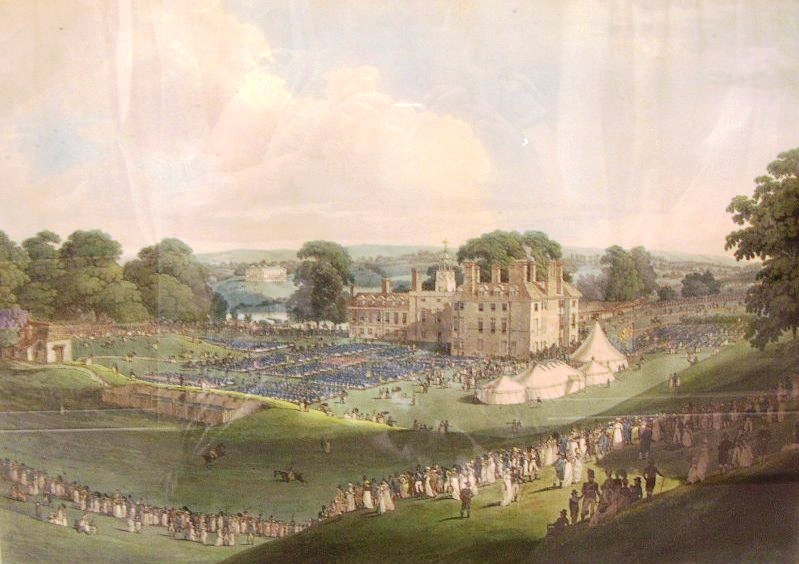Mote Park Hidden Histories
Mote Park 'Hidden Histories'
This is a long-term project investigating the site of a grand old manor house that once stood at the bottom of the Long Valley in Mote Park.
We know a sizeable house was located here up until 1799/1800, when it was demolished following the completion of Lord Romney’s new Georgian manor house, on the opposite side of the lake (now Audley Mote House retirement village).
Sketches and paintings from the late 18th century give us an idea of how the building might have looked, but nothing now remains above ground.
We know that some elements of the original building were later used in the new Mote House, including the ornate clock tower which now sits atop the stable block.
 East wing of old Mote house (looking north), with the clock tower clearly visible on the east range, c.1780's
East wing of old Mote house (looking north), with the clock tower clearly visible on the east range, c.1780's
It’s uncertain how much more of the old building was repurposed but it is likely that a lot of the stone was incorporated into various outbuildings and walls, rather than into the new house, as this was already complete by the time of the demolition.
 Illustration of the demolition of the old stable block c. 1801
Illustration of the demolition of the old stable block c. 1801
Working with Kent County Council's Community Archaeologist, and volunteers from a number of local archaeological societies, we began to look for evidence for the layout of old Mote House; to investigate when it was first built (did it begin as a Tudor building?); and how it developed over time.
Geophysical Survey
In 2021, we carried out a series of surveys using geophysics equipment, including ground penetrating radar, magnetometry and resistivity. These techniques allowed us to peer below the surface at the buried archaeology.
The results indicated that the substantial foundations of old Mote house survived under the ground.
Geophysics results:
 Resistivity of the site, courtesy John Townsend (north at top)
Resistivity of the site, courtesy John Townsend (north at top)
 Ground penetrating radar, courtesy Wessex Archaeology
Ground penetrating radar, courtesy Wessex Archaeology
2022 Test pits
The next step was to understand what the geophysics results were telling us, and so in 2022 we returned to the site and excavated ten ‘test pits’. These are small (approx. 1m2) trial holes, that provide a snapshot of what lies beneath. They can help guide future excavation, by narrowing down specific areas to target.
 .
. .
.
Left to right: Evidence of a possible cellar, a brick wall, and a substantial ragstone wall
2024 Community Dig
The test pits confirmed that the substantial foundations of old Mote house lie just below the surface. It was decided to conduct a larger evaluation and address three key questions:
- How old was the earliest building on the site.
- How did the complex of buildings develop over time?
- Can we identify the function of any of the buildings and any of the rooms inside each wing?
Thanks to a grant of £10,000 from National Lottery Heritage Fund, we were able to team up once again with Kent County Council’s Community Archaeologist and volunteers from a number of local archaeological societies, to carry out a four-day community archaeology dig in June 2024.
Alongside the dedicated volunteers, 50 members of the public were given the opportunity to get ‘hands on’ and join in the digging. We also welcomed 64 children from St John’s Primary School. Pupils enjoyed an hour of digging or finds washing before swapping over, so everyone had a chance to have a go at everything.
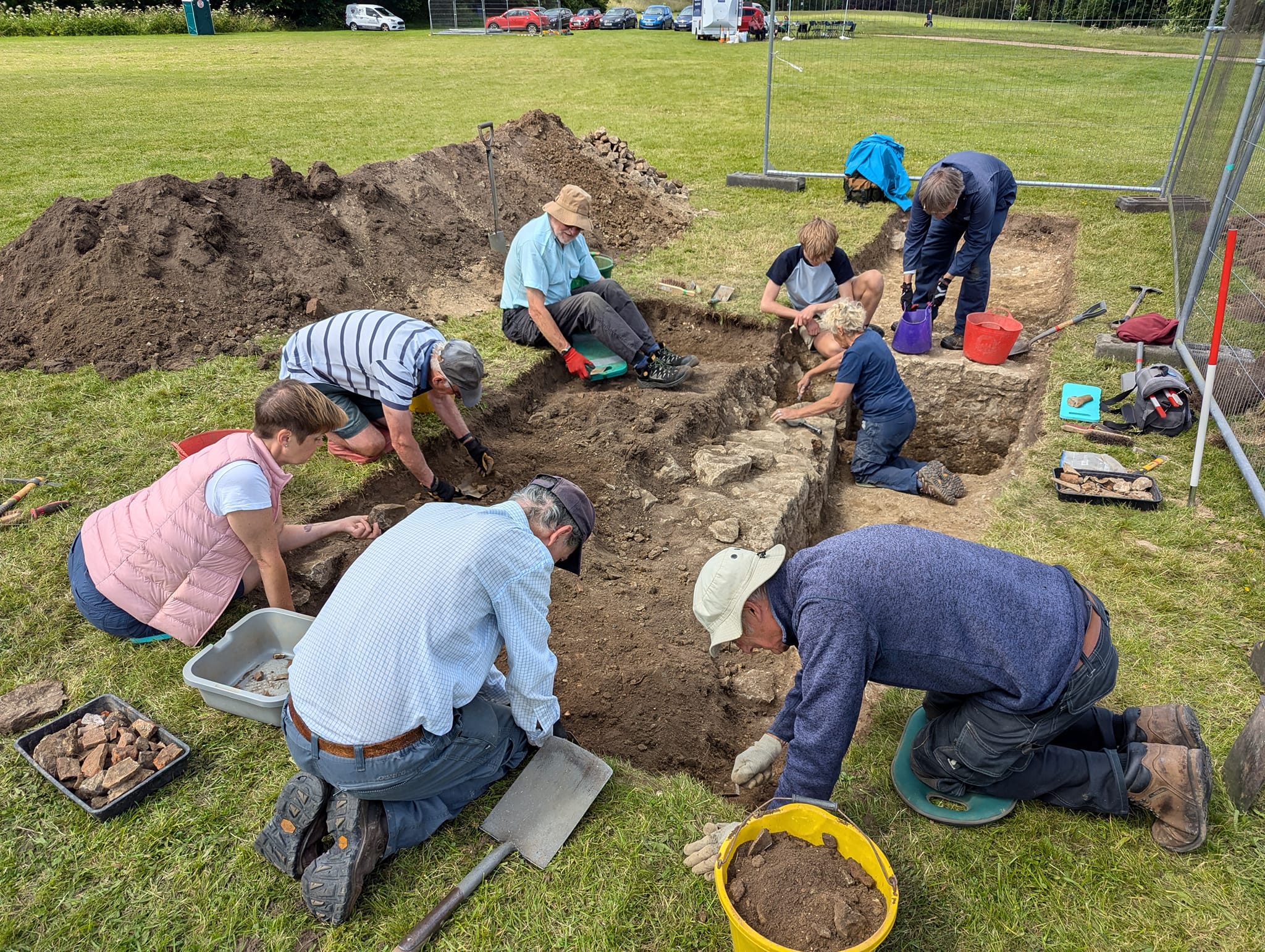 .
.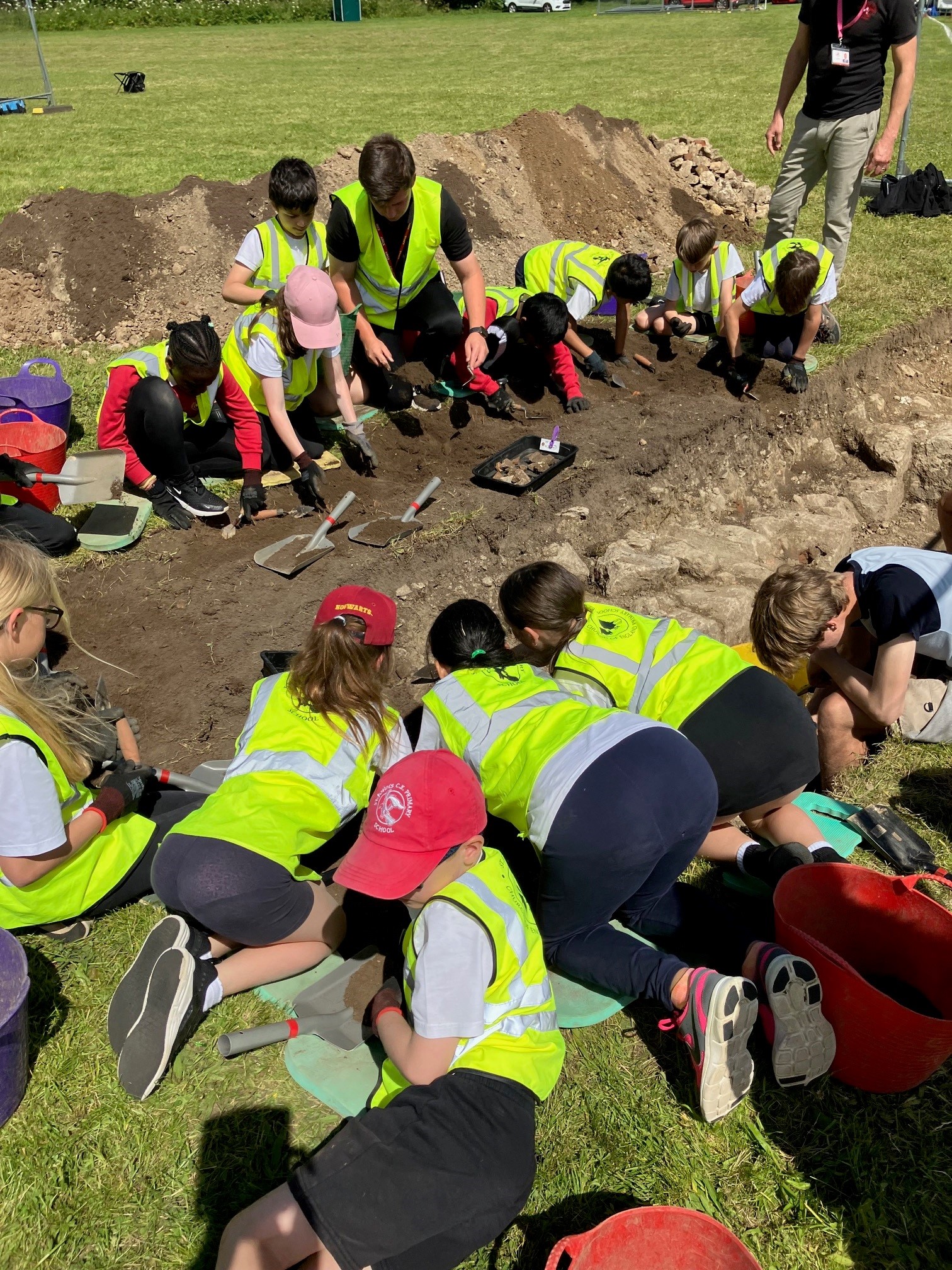
The foundations of several substantial buildings were uncovered, recorded, then re-covered to protect and preserve them. Finds from the dig have been recorded and catalogued.
While the excavations revealed some interesting features and finds, they inevitably led to more questions than answers!
We are now delving even further into the fascinating history of this important piece of Maidstone’s past.
Features and finds
 .
. .
.
Left to right: Piece of glazed floor tile; Piece of a glass bottle; Pottery sherd with leaf detail
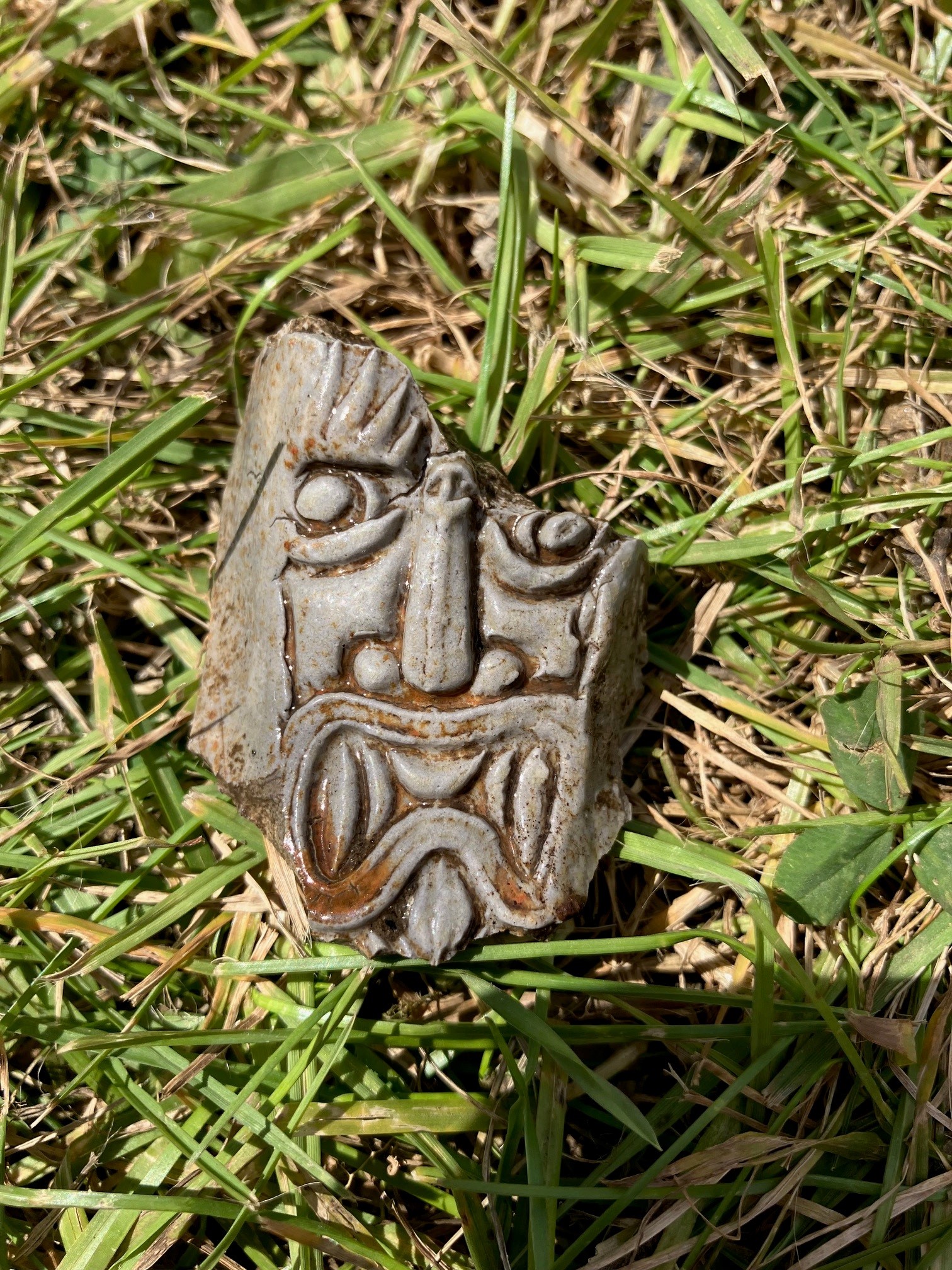 .
.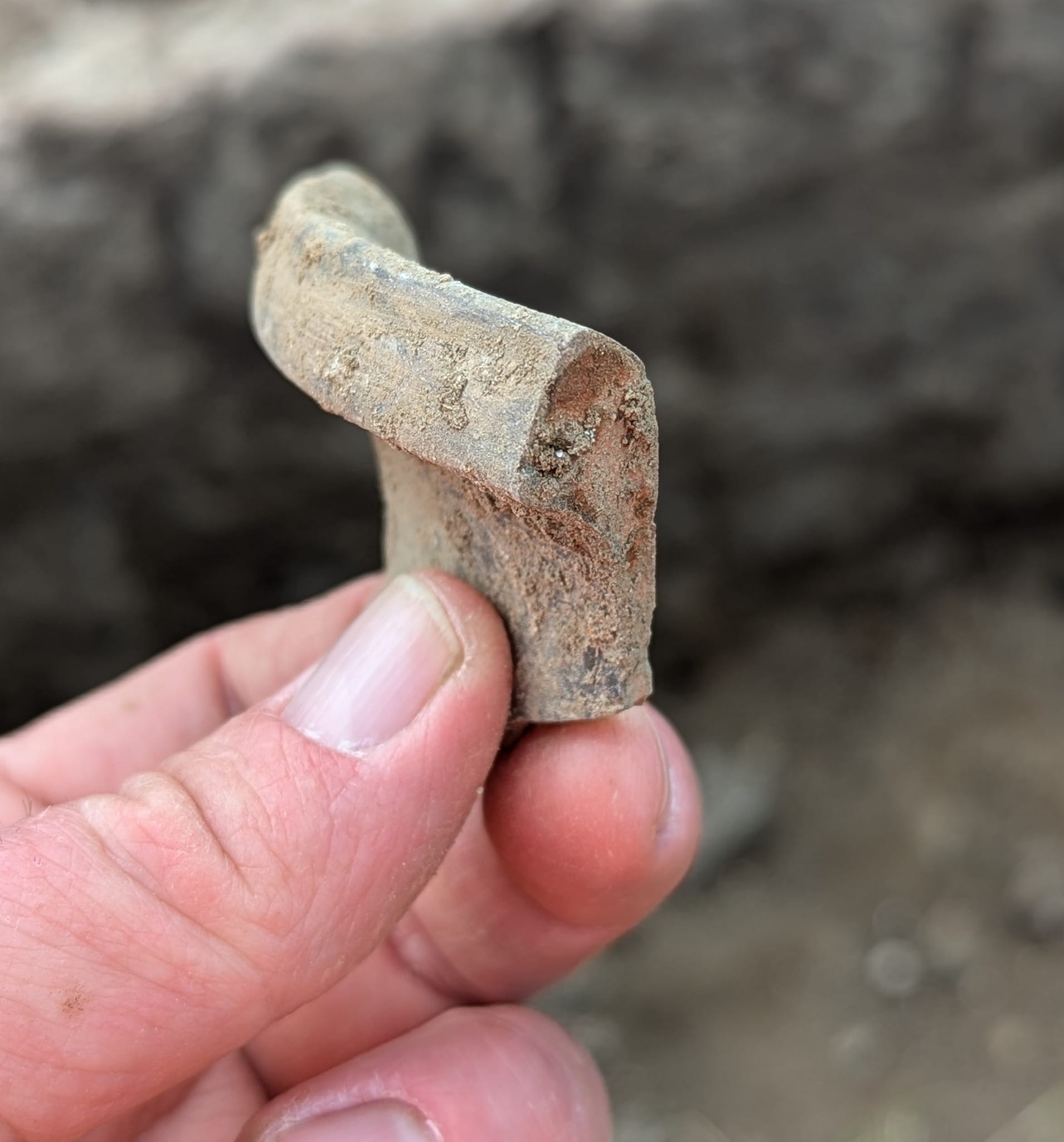
Left: A distinctive piece of a Bellarmine Jug; Right: A sherd of late Medieval pottery
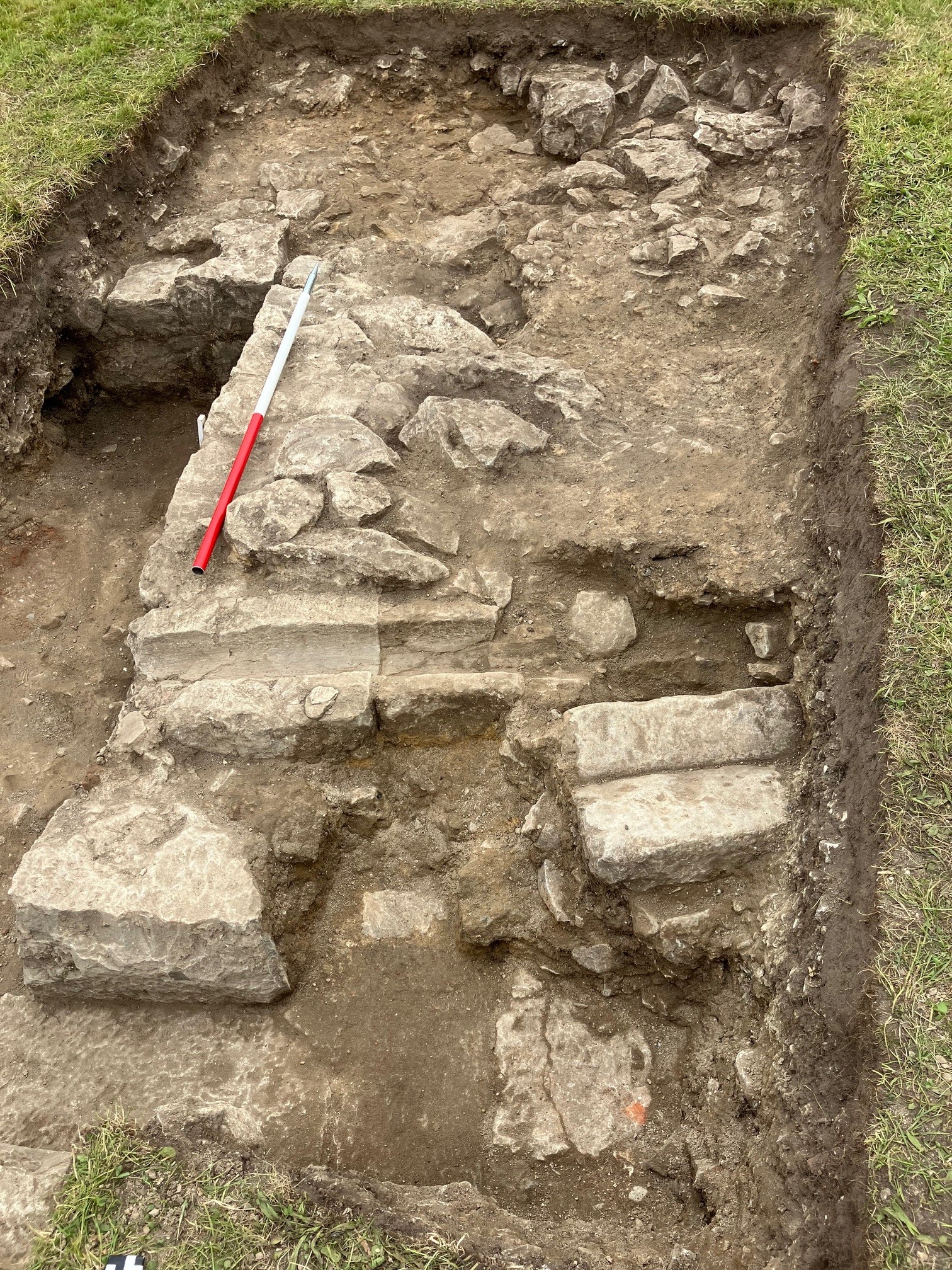 .
. .
.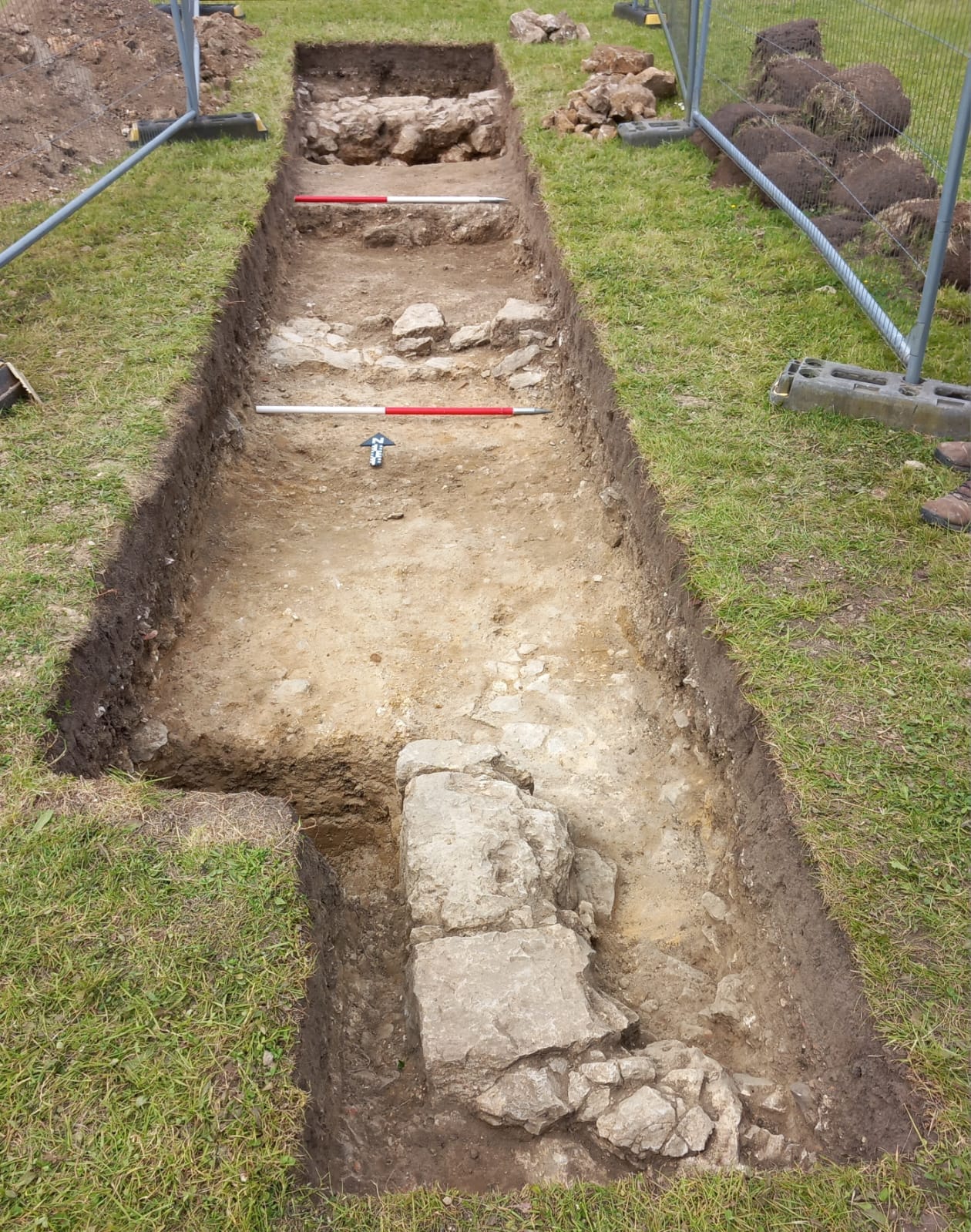
Left to right: Part of the east range; a section of the south range; part of a lost central range
.

